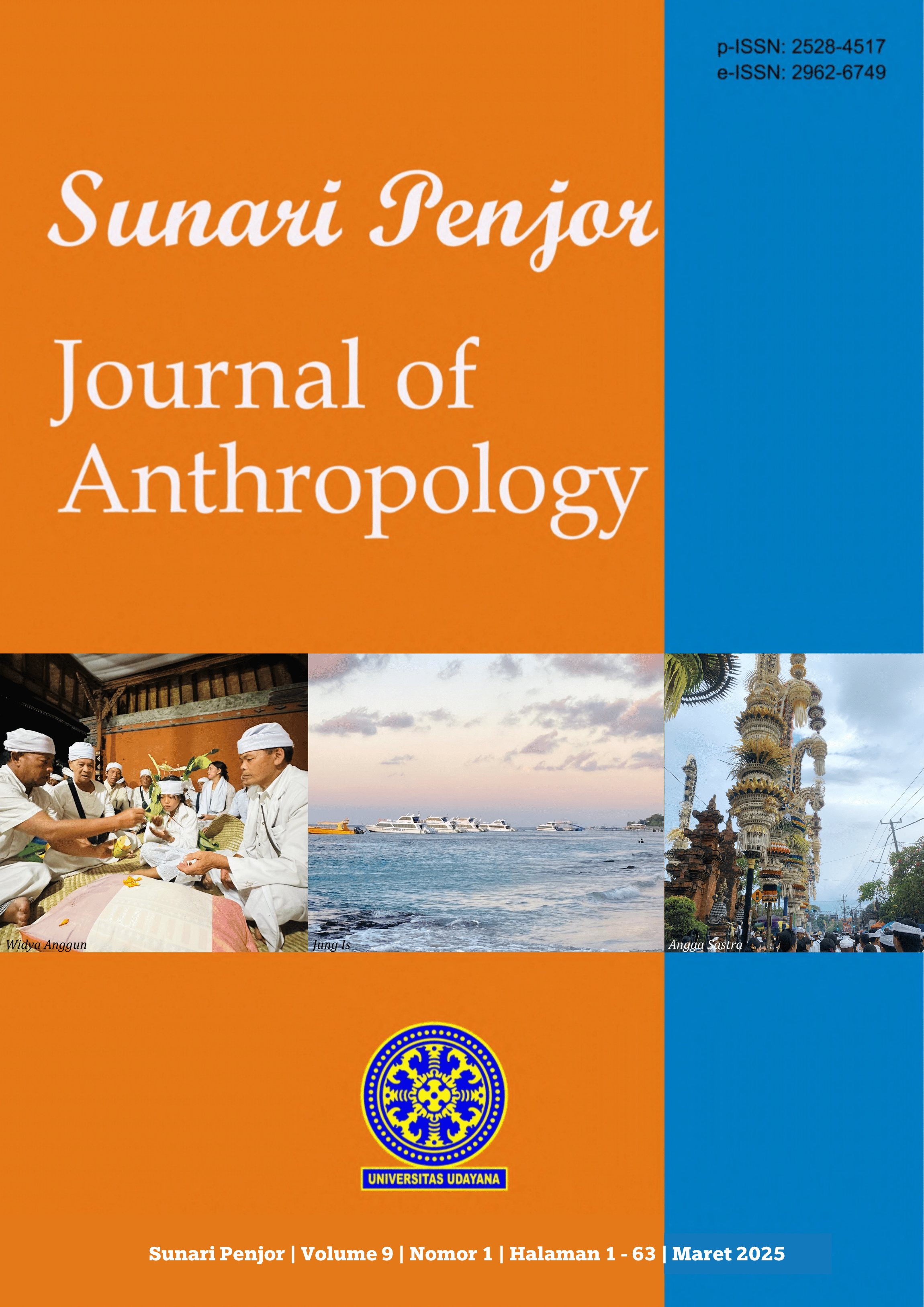Kebertahanan Upacara Ngaro di Banjar Medura, Desa Sanur Kauh, Denpasar Selatan
DOI:
https://doi.org/10.24843/SP.2025.v9.i01.p03Keywords:
Resilience, Ngaro Ceremony, Function, MeaningAbstract
Traditional ceremonies embody profound cultural significance for their supporting communities, serving as cultural heritage that must be preserved. The ngaro ceremony represents a tradition continuously maintained by the Banjar Medura community in Sanur Kauh Village as a thanksgiving offering to Dewa Baruna. This study aims to examine the existence of the ngaro ceremony and explore the functions and meanings embedded within it. Data were obtained through a qualitative approach employing ethnographic methods. Data collection utilized interview techniques, observation, and literature review. To analyze the research problem, this study employed Structural Functionalism Theory and Symbolic Interpretation Theory. The findings reveal that the continuity of the ngaro ceremony remains preserved through cultural transmission from generation to generation. The ngaro ceremony comprises three stages: preparation, climax, and closing phases. The ngaro ceremony possesses manifest functions, namely religious and cultural preservation functions, while its latent functions include solidarity and economic functions. The ngaro ceremony also encompasses religious and social meanings.












